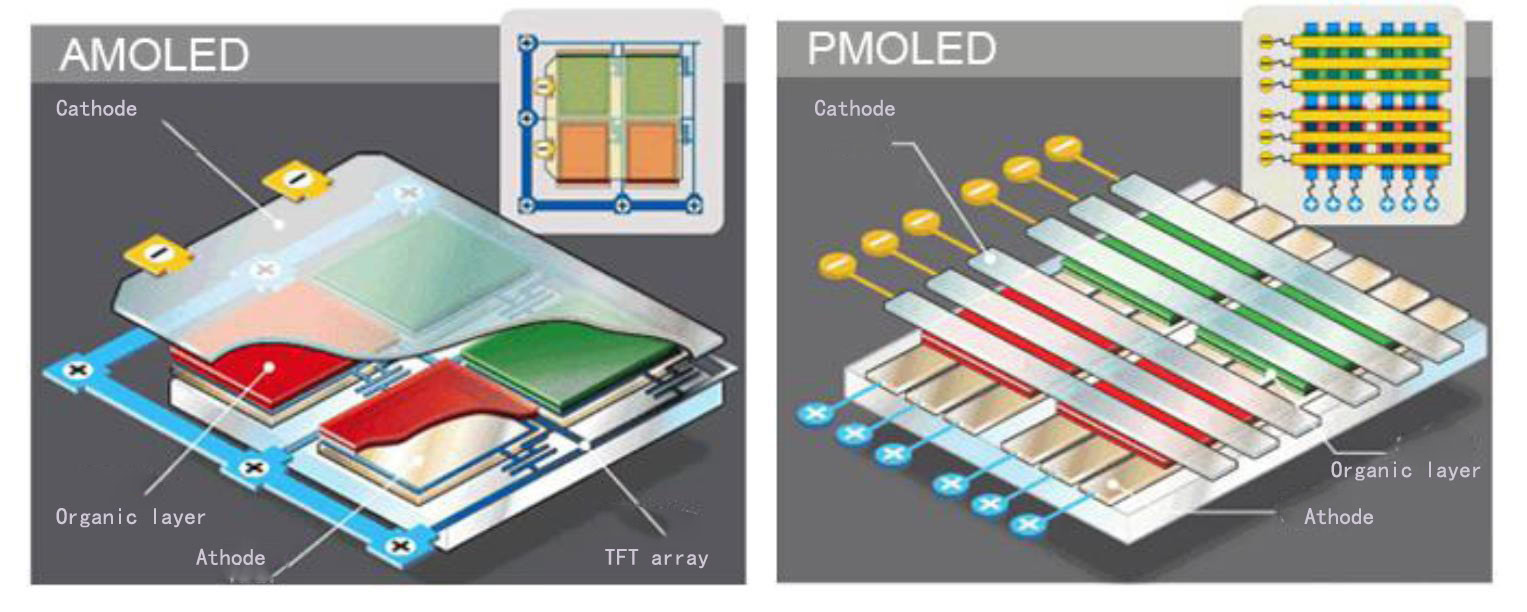Affiliate links on Android Authority may earn us a commission. Learn more.
AMOLED vs LCD: Everything you need to know

Mobile display technology is firmly split into two camps, the AMOLED and LCD crowds. There are also phones sporting OLED technology, which is closely associated with the AMOLED panel type. AMOLED and LCD are based on quite different underlying technologies, leading manufacturers to tout a number of different benefits depending on which display type they’ve opted for. Manufacturers are increasingly opting for AMOLED displays, with LCD mostly reserved for budget smartphones.
Let’s find out if really there’s a noticeable difference between these two display technologies, what sort of differences we can expect, and if the company marketing hype is to be believed.
What is an AMOLED display?
We’ll start alphabetically with AMOLED, although to be a little broader we should probably start with a little background about OLED technology in general.
It’s hidden in the name, but the key component in these display types is a Light Emitting Diode (LED). Electronics hobbyists will no doubt have played around with these little lights before. But in a display panel, these are shrunk down dramatically and arranged in red, green, and blue clusters to create an individual pixel that can reproduce white light and various colors, including red, green, and blue.
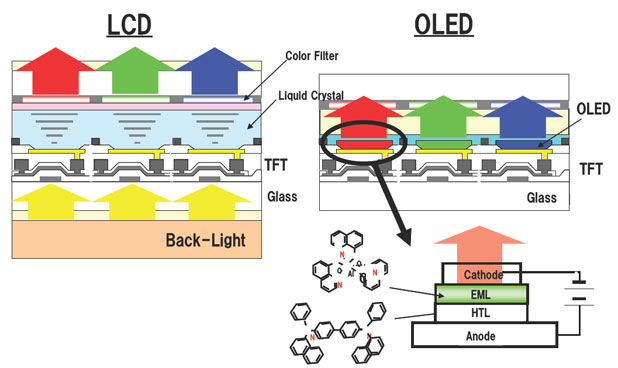
The arrangement of these sub-pixels alters the performance of the displays slightly. Pentile vs striped pixel layouts, for example, results in superior image sharpness, but lower pixel life spans due to the smaller pixel sizes.
The O part in OLED stands for organic. Simply put, there are a series of thin organic material films placed between two conductors in each LED, which is then used to produce light when a current is applied.
Finally, the AM part in AMOLED stands in for Active Matrix, rather than a passive matrix technology. This tells us how each little OLED is controlled. In a passive matrix, a complex grid system is used to control individual pixels, where integrated circuits control a charge sent down each column or row. But this is rather slow and can be imprecise. Active Matrix systems attach a thin film transistor (TFT) and capacitor to each LED. This way, when a row and column are activated to access a pixel, the capacitor at the correct pixel can retain its charge in between refresh cycles, allowing for faster and more precise control.
One other term you will encounter is Super AMOLED, which is Samsung’s marketing term for a display that incorporates the capacitive touchscreen right into the display, instead of it being a separate layer on top of the display. This makes the display thinner.
The major benefits of OLED-type displays come from the high level of control that can be exerted over each pixel. Pixels can be switched completely off, allowing for deep blacks and a high contrast ratio. Great if you want a display capable of playing back HDR content. Being able to dim and turn off individual pixels also saves on power ever so slightly. The lack of other layers on top of the LEDs means that the maximum amount of light reaches the display surface, resulting in brighter images with better viewing angles.
The rise of curved displays and foldable phones

OLED technology is a key driving force behind the growth of curved edge displays and the latest foldable smartphones.
The use of LEDs and minimal substrates means that these displays can be very thin. Furthermore, the lack of a rigid backlight and innovations in flexible plastic substrates enables flexible OLED-based displays. Complex LCD displays cannot be built in this way because of the backlight requirement. Flexy displays were originally very promising for wearables. Today, premium-tier smartphones make use of flexible OLED displays. Although, there are some concerns over how many times a display can flex and bend before breaking.
Foldable smartphones based on OLED display technology include the Galaxy Z Fold 4, the Oppo N2 Flip, and the Motorola Razr.
LCD displays explained
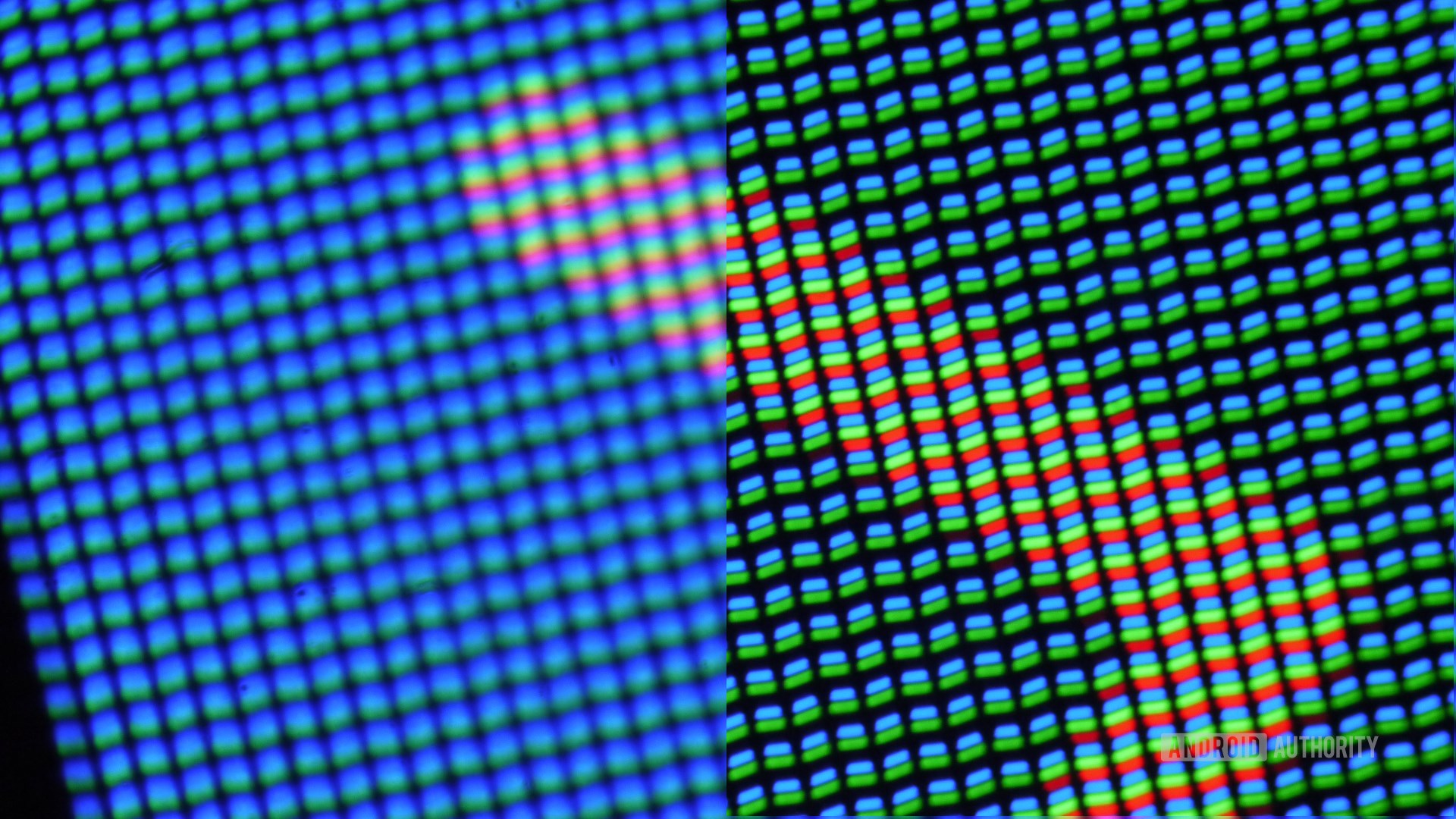
LCD stands for Liquid Crystal Display and produces colors quite differently from AMOLED. Rather than using individual light-emitting components, LCD displays rely on a backlight as the sole light source. Although multiple backlights can be used across a display for local dimming and to help save on power consumption, this is more of a requirement in larger displays.
Scientifically speaking, there’s no individual white light wavelength. White light is a mixture of all other visible colors in the spectrum. Therefore, LCD backlights have to create a pseudo-white light as efficiently as possible, which can then be filtered into different colors in the liquid crystal element. Most LCDs rely on a blue LED backlight which is filtered through a yellow phosphor coating, producing a pseudo-white light.
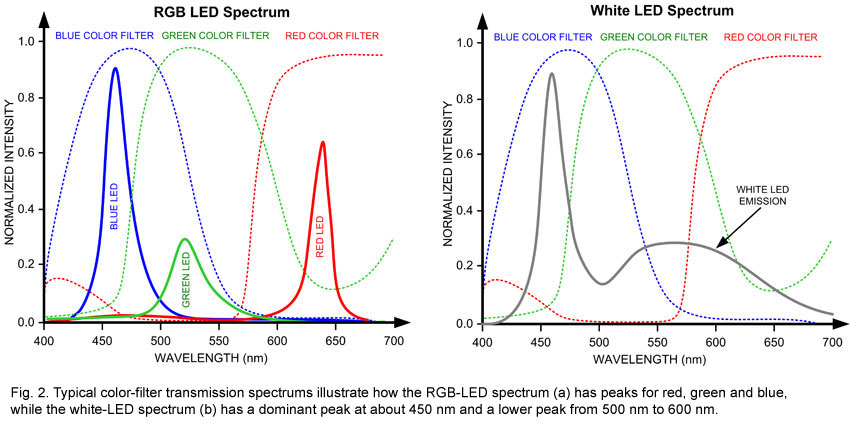
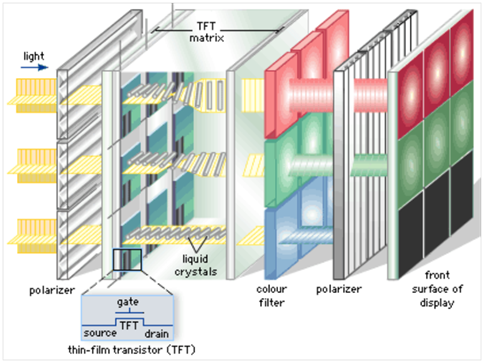
All combined, this allows an LCD display to control the amount of RGB light reaching the surface by culling a backlight, rather than producing colored light in each pixel. Just like AMOLED, LCD displays can either be active or passive matrix devices, but most smartphones are active these days.
Super AMOLED vs LCD: What’s the difference?

This wide variation in the way that light is produced has quite a profound difference to the user experience. Color gamut is often the most talked-about difference between the two display types, with AMOLED providing a greater range of color options than LCD, resulting in more vibrant-looking images.
OLED displays have been known for additional green and blue saturation, as these tend to be the most powerful colors in the sub-pixel arrangement, and very little green is required for white light. Some observers find that this extra saturation produces results that they find slightly unnatural looking. Although color accuracy has improved substantially in the past few years and tends to offer better accuracy for wider color gamuts like DCI-P3 and BT-2020.
Despite not possessing quite such a broad gamut, LCD displays typically offer 100% sRGB gamut used by most content and can cover a wide gamut and most of the DCI-P3 color space too. We’ve also seen improvements to LCD color gamuts via technologies like Quantum Dot, so you’ll have to choose between QLED vs OLED when shopping for your next TV.
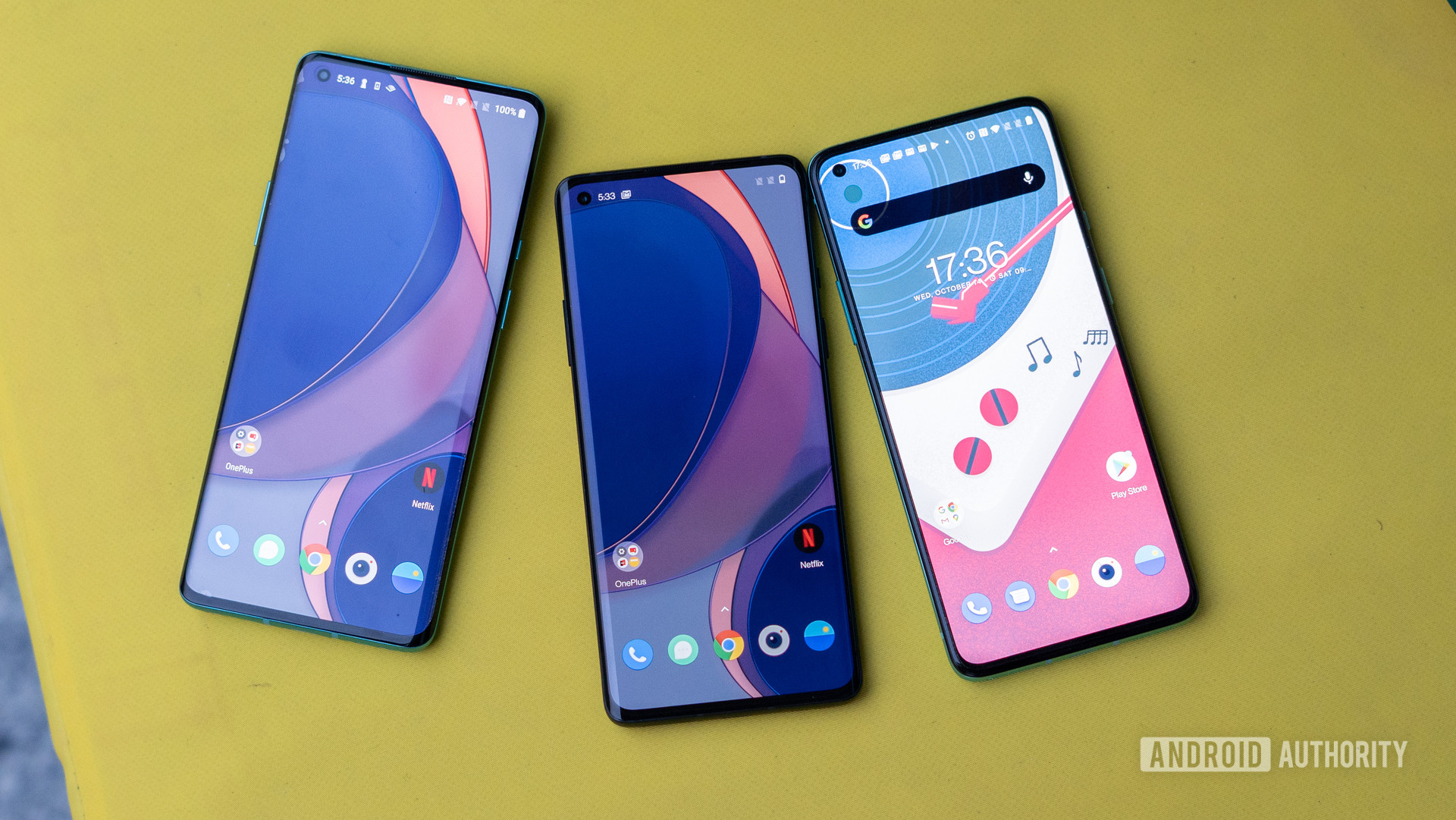
As we mentioned before, the lack of a backlight and filtering layers weighs in favor of OLED over LCD. LCD displays often suffer from light bleed and a lower contrast ratio as the backlight doesn’t switch off even when pixels are supposed to be black, while OLED can simply switch off its pixels. LCD’s filtering layer also inherently blocks some light and the additional depth means that viewing angles are also reduced compared to OLED.
One downside of AMOLED is that different LEDs have different life spans, meaning that the individual RBG light components eventually degrade at slightly different rates. As well as the dreaded but relatively rare screen burn-in phenomenon, OLED display color balance can drift very slightly over time, while LED’s single backlight means that color balance remains more consistent across the display.
Picking a winner
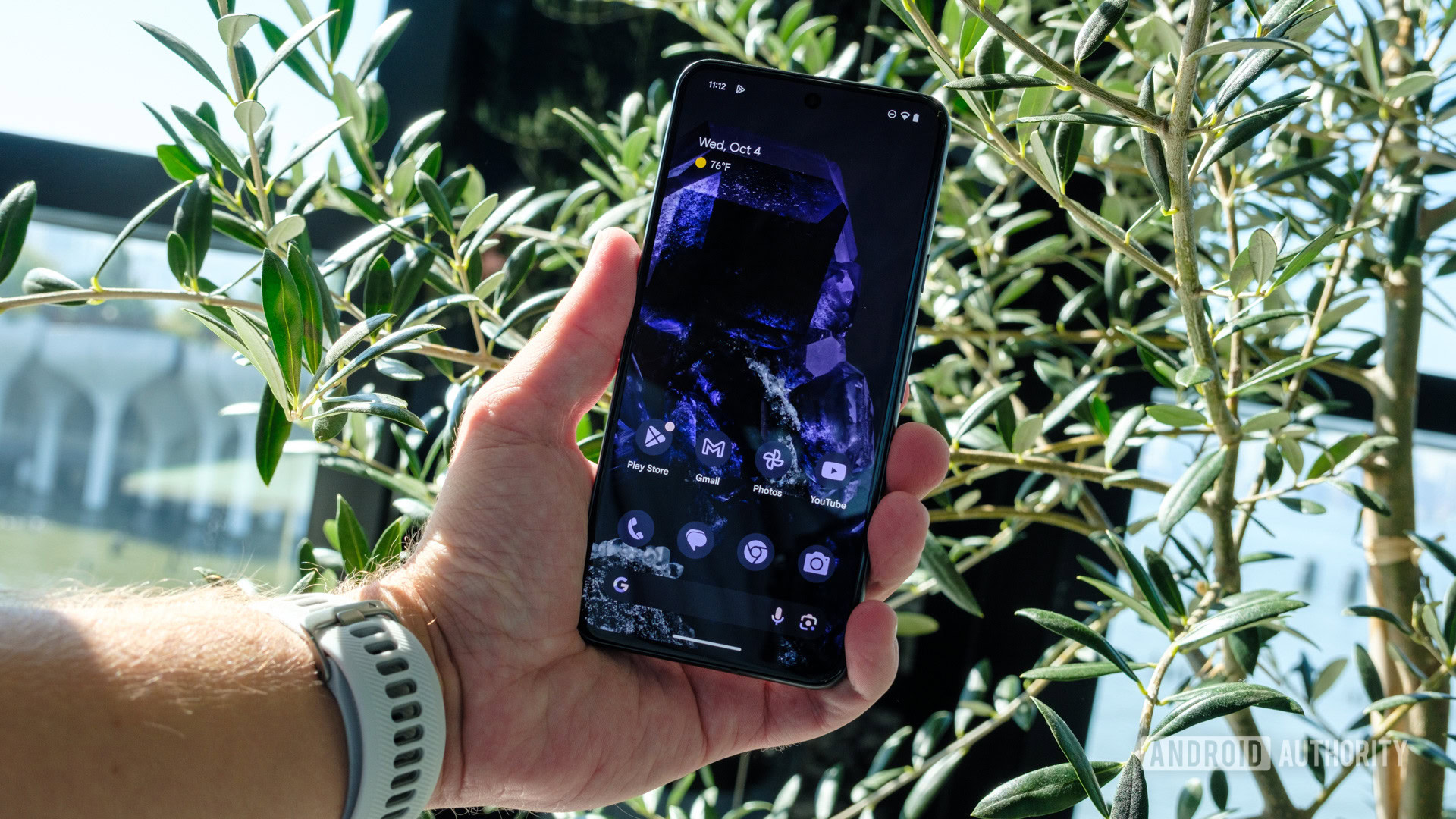
There are some pros and cons to both technologies and some reasonable user preferences between the different color and contrast profiles. Although the prevalence of multiple display modes available in modern smartphones makes this somewhat less of an issue these days. However, the falling production costs and additional benefits of OLED displays have made them a more popular choice than ever across a wide range of price segments. OLED dominates the high-end smartphone and TV spaces owing to its wider color gamut and superior contrast ratio, while still supporting decent refresh rates. Not to mention its flexible characteristics for brand-new mobile form factors.
Major display manufacturers, such as LG Display and Samsung Display, are betting big on OLED technology for the future, making major investments in additional production facilities. Particularly when it comes to its use in flexible display technology. The AMOLED panel market is expected to be worth over $100 billion by 2028, almost 10x its value in 2017 when this article was first published.
That said, developments in Quantum Dot and mini LED displays are closing the already small performance gap between LCD and OLED, so certainly don’t count LCD out of the race just yet.
